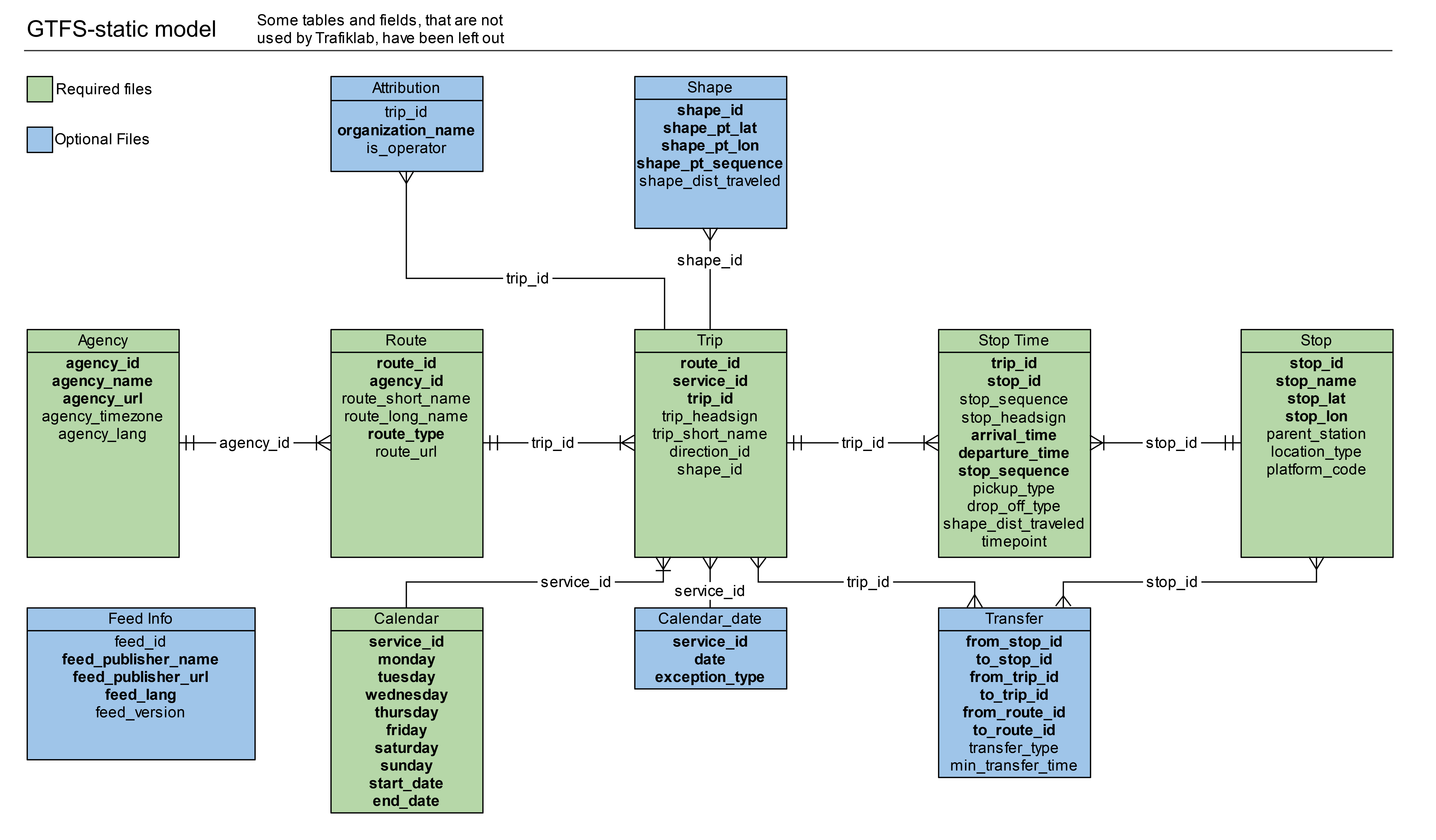Using GTFS Files
Obs: Detta innehåll finns inte tillgängligt på svenska. Därför ser du engelska versionen. Om du tycker att denna sida borde översättas till svenska, kan du skriva till oss på support.trafiklab.se.
Om du vill se webbsidan på engelska, klicka här.
What is GTFS?
The General Transit Feed Specification is a file format which originally was developed by Google in 2006. It combines all the data in one compact file. This means you can download a single file to get timetable information for the entirety of Sweden. The GTFS Standard consists of 2 parts: static and real-time data. In the following sections, we will help you to get started with both.
How does GTFS Work?
A GTFS file is a zip archive that contains several *.txt files. You can compare this archive file with a database. The files inside the archive contain Comma Separated Values (CSV) data, meaning they are easy to read, both for computers and humans. Each file contains all the instances of a certain type, just like a database table. For example, one file contains all the routes, another file contains all the stops. The files are linked together through ids, similar to how foreign keys work in a database. The image below gives an idea of the structure.

When should I use GTFS?
A dataset like GTFS is the opposite of an API like ResRobot. Each has its own benefits and drawbacks. When you want to create a simple app, or let users search for the next departure from your website, an API is easier to use. However, when you want to analyze data, an API would need millions of requests compared to a single GTFS file that has all the data.
| Well suited for | Not so suited for |
|---|---|
| Analysing (real-time) transport data | Quickly getting the next departures from a stop |
| Building your own route-planner or API | Quickly calculating a route from A to B |
| Getting a list of all public transport stop-areas for an operator or a country | Projects where large files (>25MB) can’t be used |
| Getting the live position of all public transport vehicles |
GTFS at Trafiklab
At Trafiklab, we offer two GTFS feeds. The first is GTFS Sverige 2, which includes information for entire Sweden. We also offer GTFS Regional, which consists of multiple GTFS feeds, each of which covers an operator in Sweden. You can see the difference between those two feeds below.
| GTFS Sverige 2 | GTFS Regional | |
|---|---|---|
| Geographical coverage | 100% | 50% |
| Transit coverage | 100% | 92% |
| Data quality | Average quality | Highest quality |
| Real-time data | Only static data | Static + Real-time + GPS positions |
| Historical data (static) | Since 2012 | Not available |
Static GTFS files
Obs: Detta innehåll finns inte tillgängligt på svenska. Därför ser du engelska versionen. Om du …
Realtime GTFS files
Obs: Detta innehåll finns inte tillgängligt på svenska. Därför ser du engelska versionen. Om du …
You can find the complete GTFS reference at https://developers.google.com/transit/gtfs/reference/.
You can find the complete GTFS-RT reference at https://developers.google.com/transit/gtfs-realtime/reference